Polarization
Polarization Introduction
In the process of polarization, It can be said that it is possible to transform unpolarised light into polarised light. Polarised light waves are light waves(such as sunlight) in which the vibration occurs in a single plane. The process of transforming unpolarised light into the polarised light is called polarisation.
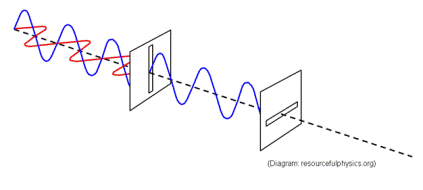
[Usage under creative commons Credit]
Concept of Polarised Light
The phenomena of interference and diffraction that light is a form of wave motion. These phenomena could not explain the type of wave motion i.e. whether the light waves are longitudinal or transverse or whether the vibration is linear, circular, elliptical or torsional. These shortcomings were explained by phenomena known as the polarisation of light.
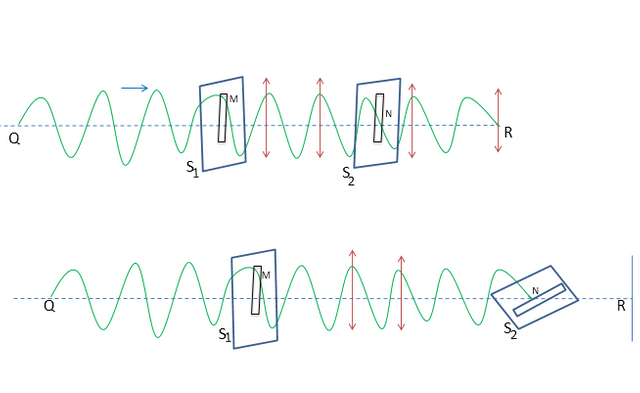
Let a string QR be passed through two parallel slits S1 and S2. The string is attached to a fixed point R. Hold the end Q and move the string up and down perpendicular to QR. A transverse wave emerges parallel to the slit S1. The slit S2 allows the wave to pass through it when it is parallel to S1. Then the wave is said to be plane polarised.
In case of the slit S2 is at the right angle to the slit S1, then the slit S2 does not allow the wave to pass through it. Then the waves between Q and S1 are unpolarized, while the waves passing through S1 are polarised and thus slit S1 acts as a polarizer.
In the intermediate positions of the S2, the waves will be partly transmitted and partly stopped i.e. the wave will reach R with varying amplitudes. Thus we observed that as the slit S2 is rotated the amplitude of vibration varies. This variation in amplitude is only due to the vibration in the string being transverse.
If the longitudinal waves are produced by moving the string forward and backward along its length, the waves will freely pass through S1 and S2 irrespective of their position.
Thus we see that the amplitude of vibration varies only in the case of transverse vibrations. A similar phenomenon has been observed in light when it passes through a tourmaline crystal.
Plane polarised light
The plane polarised light is the light in which the vibrations take place only along one straight line perpendicular to the direction of propagation of light. In a plane-polarised beam of light, the vibrations are along a single straight line.
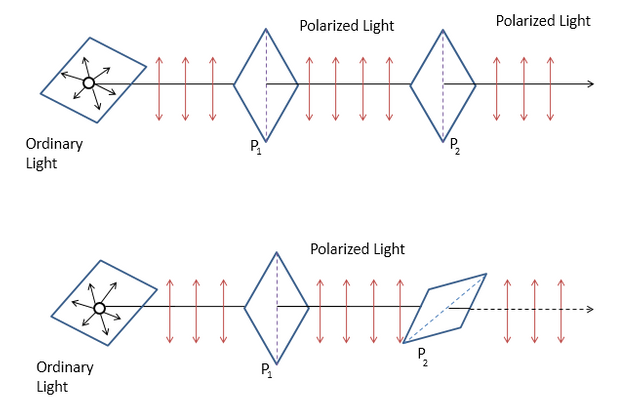
Un-polarised light
The unpolarized light is the light in which the vibration late place along all possible straight lines perpendicular to the direction of propagation of light.
Plane of vibrations
The plane containing the direction of vibration and direction of propagation of light is called the plane of vibration.
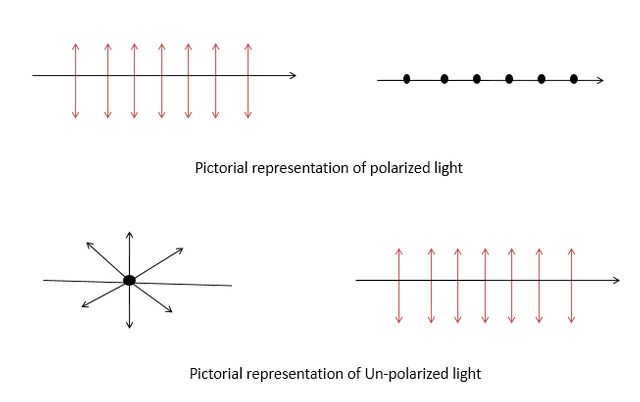
Plane of polarisation
The plane containing the direction of propagation of light, but containing no vibration is called the plane of polarisation.
The plane of polarisation is always at right angles to the plane of vibration.
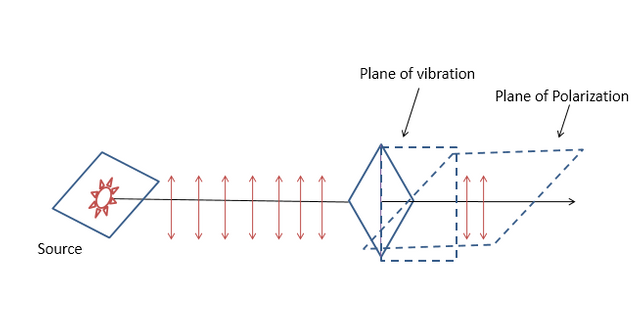
References: A lecture on basic Engineering electronics by Mr. Thomas, all the images in the post are self-created unless stated otherwise.
Thank you for reading.